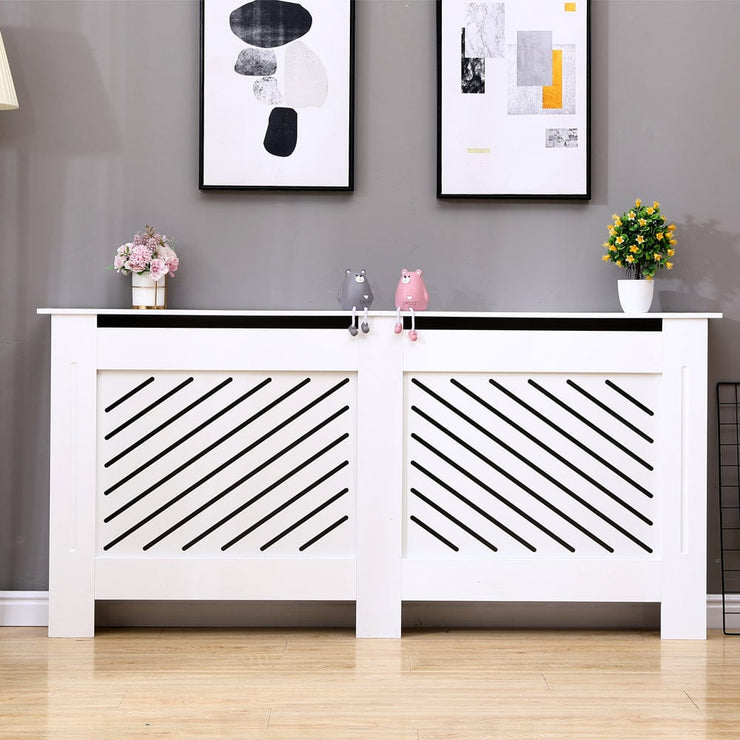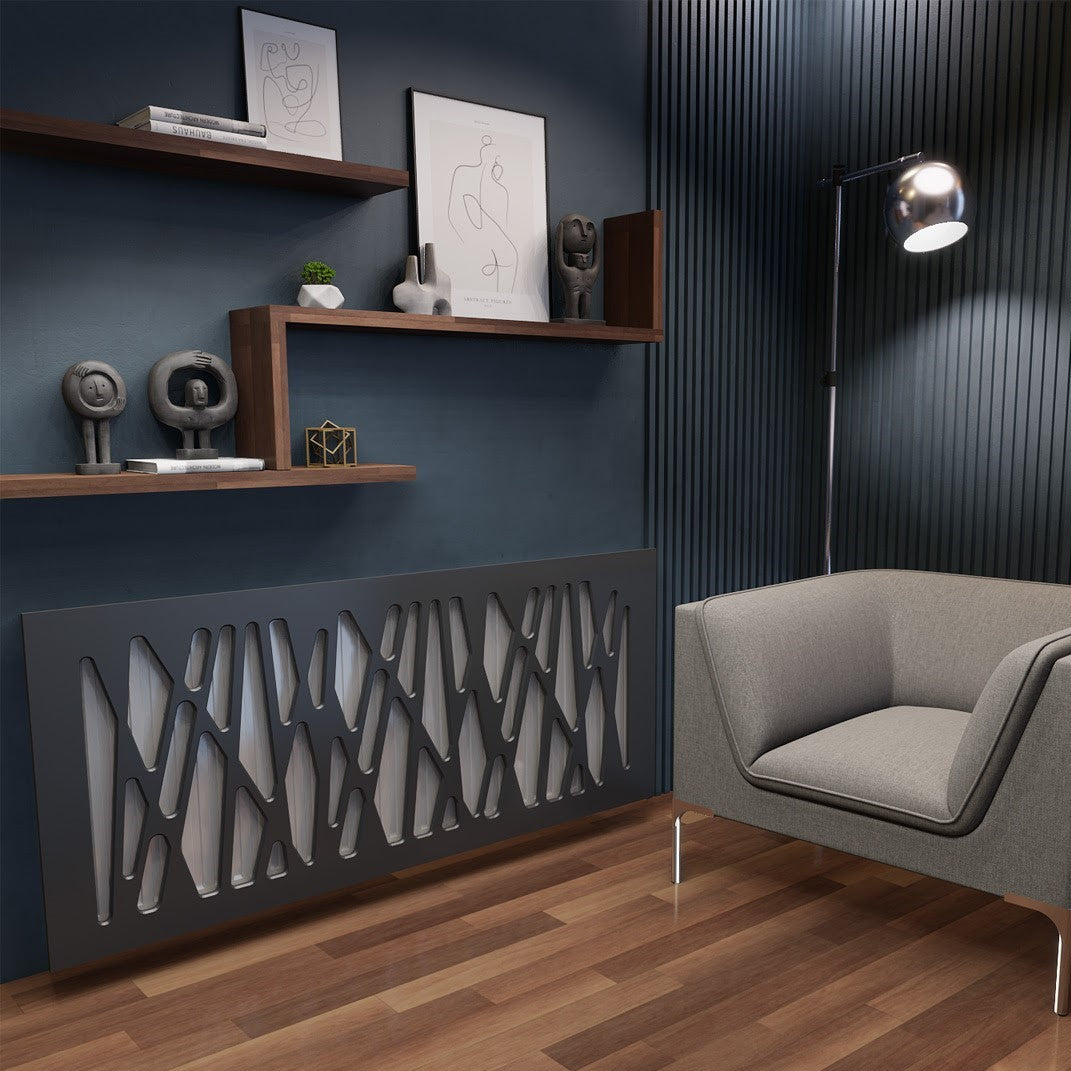Top Benefits of Installing a Radiator Cover in Your Home
Radiator Covers: Understanding Products, Designs, and Benefits
Radiator covers offer both practical and visual purposes within a home, supplying a range of products such as steel, hardwood, and mdf to fit numerous style choices. Choosing the ideal radiator cover includes understanding the subtleties of products, styles, and their linked benefits.
Kinds Of Materials


Wood covers, commonly crafted from hardwoods such as oak or maple, give a traditional, warm appearance that matches conventional insides. Their resilience and capacity to be tarnished or painted add to their convenience. Steel covers, commonly made from steel or aluminum, are favored for their robustness and modern-day look, frequently including smooth lines that enhance contemporary rooms.
MDF, a manufactured wood item, is popular for its cost-effectiveness and ease of customization. It can be repainted or completed to match existing style while offering a smooth surface. Plastic covers, while much less common, are immune and lightweight to moisture, making them suitable for moist atmospheres.
Ultimately, the selection of product for a radiator cover should align with the house owner's style choices, practical requirements, and the particular environment where the cover will be set up. Each material uses a distinct character, making certain that there is an option to match every taste and setting.
Popular Layout Styles
Highlighting aesthetic allure, prominent layout styles for radiator covers mirror a series of tastes and indoor style patterns. Conventional styles usually feature complex woodwork and luxuriant outlining, making them appropriate for vintage-inspired or traditional interiors. These covers commonly incorporate sculpted elements, providing a warm and welcoming feel to any type of area.
On the other hand, modern layouts focus on minimal visual appeals, identified by clean lines and underrated style. Materials such as metal or smooth wood with a smooth surface are commonly made use of, allowing these covers to blend seamlessly into contemporary spaces. Industrial styles, on the other hand, accept raw products like exposed steel and concrete, including a strong statement to loft space or city setups.
For those seeking an one-of-a-kind touch, bespoke styles supply modification choices that satisfy specific choices, enabling property owners to choose colors, patterns, and materials that complement their decoration. Additionally, farmhouse-style covers integrate rustic components, featuring troubled timber and straightforward forms that stimulate a comfortable, nation appeal.
Advantages of Radiator Covers
Radiator covers not just improve the aesthetic allure of a room yet also provide several functional benefits that make them a rewarding addition to any home. Among the main benefits is security, specifically in homes with family pets or kids. Covers lower the threat of burns from hot radiator surface areas, making sure a more secure environment.
In addition, radiator covers can enhance energy performance. By guiding warmth right into the area as opposed to enabling it to run away, they assist preserve a consistent temperature level, minimizing heating expenses gradually. This is particularly valuable in older homes where radiator systems might be less effective.
One more notable benefit is noise decrease. Radiators can in some check out here cases produce unwanted sounds during procedure, and covers can assist smother these sounds, adding to a much more serene space. Additionally, radiator covers can be useful, supplying added storage space or display screen area, thus making the most of the utility of often-overlooked areas.
Finally, they can shield radiators from dirt and particles, which can hinder performance and rise upkeep needs. With these combined advantages, radiator covers emerge as a sensible service for boosting both the functionality and style of any kind of home over here atmosphere.
Setup Considerations
Setting up radiator covers requires careful consideration to make sure both functionality and security (Radiator cover). Initially, assess the dimensions of your radiator and the surrounding area to make sure an appropriate fit. Exact dimensions are important; an uncomfortable cover can obstruct heat flow or produce safety threats
Next, examine the product of the cover. While timber provides visual appeal, metal alternatives may provide far better longevity and warmth resistance. Think about the weight of the cover also; larger covers may need additional assistance or reinforcements to prevent drooping or damage gradually.
Air flow is an additional vital facet. Covers should feature ample air movement to stop overheating and preserve reliable heating. Search for designs with slats or openings that permit warm to flow without obstruction.
Furthermore, ensure that the cover is safely installed to stop mishaps, particularly in homes with children or pet dogs. Radiator cover. It's a good idea to follow the manufacturer's installment guidelines closely and, if necessary, consult a specialist for complicated setups
Upkeep and Care Tips
Proper upkeep of radiator covers is crucial for guaranteeing their long life and ideal performance. Routine cleansing is necessary; dirt and particles can gather, obstructing airflow and decreasing warmth efficiency. Use a soft, moist cloth or a microfiber duster to gently wipe the surface area, staying clear of extreme chemicals that might damage the surface. For repainted or wood covers, take into consideration an ideal gloss or safety finishing to preserve their look.
Evaluate the covers regularly for indicators of wear or damage, such as fractures or peeling off paint. Dealing with these concerns without delay can protect against additional degeneration. Guarantee that the covers are securely secured and check for any loose screws or installations, as resonances from the radiator can loosen them with time.
In cooler months, avoid positioning heavy objects or decorative items on top of the radiator covers, as this visit the site can impede warmth distribution and create unnecessary anxiety to the structure. Consider seasonal maintenance by getting rid of the covers for detailed cleansing and assessment throughout warmer months when the home heating system is inactive. Embracing these simple care ideas will boost the performance and aesthetic charm of your radiator covers, ensuring they offer their function properly for years to find.

Conclusion
In summary, radiator covers function as aesthetic and practical improvements to property spaces. The varied series of materials, consisting of woods, plastic, mdf, and steel, enables placement with numerous style styles such as typical, contemporary, industrial, and farmhouse. The benefits of these covers prolong beyond security and energy performance to consist of extra storage and dust defense. Careful factor to consider of installation and upkeep further guarantees the durability and performance of radiator covers in any kind of home atmosphere.
Radiator covers serve both visual and practical purposes within a home, supplying an array of materials such as metal, wood, and mdf to fit different style preferences. Choosing the appropriate radiator cover entails comprehending the subtleties of products, layouts, and their associated benefits.Highlighting visual charm, popular design styles for radiator covers show a variety of tastes and interior style fads.Radiator covers not only improve the visual appeal of a space but likewise offer numerous sensible advantages that make them a worthwhile enhancement to any kind of home. Consider the weight of the cover as well; much heavier covers may require additional assistance or reinforcements to prevent drooping or damage over time.